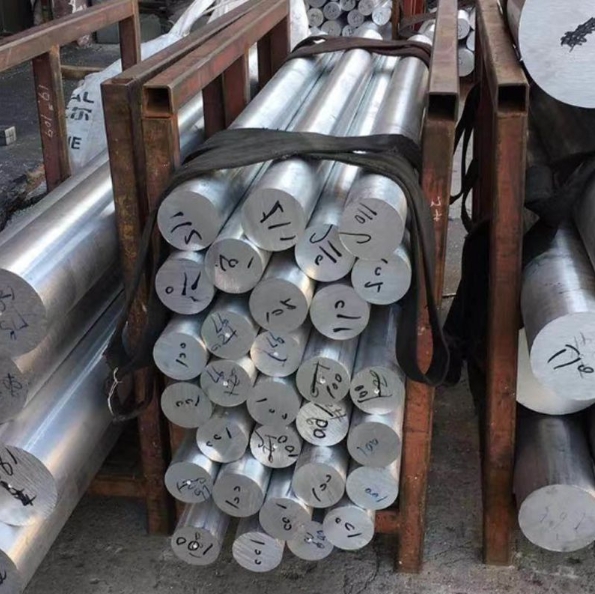Aluminum rods come in various sizes and are widely used across industries such as construction, automotive, and aerospace. One of the most commonly used sizes is the 1/16" aluminum rod. This article will break down the strength, load capacity, and practical applications of a 1/16" aluminum rod, providing insights into its versatility and limitations. By the end, you’ll understand how to choose and use this material effectively.
Understanding the Strength of 1/16" Aluminum Rod
Aluminum is a lightweight, corrosion-resistant metal, known for its excellent strength-to-weight ratio. The strength of a 1/16" aluminum rod depends on several factors including the alloy type, the rod's manufacturing process, and its environment.
What Determines the Strength of an Aluminum Rod?
When considering the strength of a 1/16" aluminum rod, it’s important to look at factors such as:
-
Material Alloy: Different aluminum alloys, such as 6061 or 5052, offer varying strength levels.
-
Rod Shape and Surface Area: A round rod may distribute stress differently compared to a square bar.
-
Heat Treatment: Aluminum rods that undergo heat treatment, like T6 temper, are stronger than untreated versions.
These factors work together to determine the rod’s tensile strength, yield strength, and load-bearing capacity.
How to Calculate Load Capacity for a 1/16" Aluminum Rod?
To estimate the load capacity of a 1/16" aluminum rod, we need to know the tensile strength of the specific alloy used. For instance, the commonly used 6061 aluminum alloy has a tensile strength of approximately 45,000 psi (pounds per square inch). Using basic formulas from engineering, we can determine the load capacity.
Formula:
Load Capacity=Tensile Strength×Cross-sectional Area\text{Load Capacity} = \text{Tensile Strength} \times \text{Cross-sectional Area}Load Capacity=Tensile Strength×Cross-sectional Area
Where:
-
Tensile Strength is given in psi (pounds per square inch).
-
Cross-sectional Area is calculated based on the diameter of the rod.
For a 1/16" diameter rod:
-
Radius r=1/162r = \frac{1/16}{2}r=21/16 inches = 0.03125 inches.
-
Area A=πr2≈0.0031 in2A = \pi r^2 \approx 0.0031 \, \text{in}^2A=πr2≈0.0031in2.
Thus, the estimated load capacity of a 1/16" 6061 aluminum rod is:
Load Capacity=45,000×0.0031≈139.5 lbs.\text{Load Capacity} = 45,000 \times 0.0031 \approx 139.5 \, \text{lbs}.Load Capacity=45,000×0.0031≈139.5lbs.
This means that under ideal conditions, a 1/16" aluminum rod can withstand approximately 140 pounds of load before it starts to break.
Comparing Aluminum Alloys for 1/16" Rods
There are various types of aluminum alloys used for rods. While all of them share certain properties like being lightweight and corrosion-resistant, their load capacities can vary significantly.
| Alloy Type | Tensile Strength (psi) | Yield Strength (psi) | Common Use |
|---|---|---|---|
| 6061 | 45,000 | 40,000 | Structural, aerospace |
| 5052 | 35,000 | 32,000 | Marine, chemical |
| 2024 | 70,000 | 60,000 | Aerospace, military |
Choosing the Right Alloy for Your Project
When choosing between alloys for your 1/16" aluminum rod, consider both strength and application. For example:
-
6061 is great for structural applications, including framing and support, where moderate strength is sufficient.
-
2024, with its higher tensile strength, is best suited for high-performance industries like aerospace.
How to Safely Use a 1/16" Aluminum Rod in Load-Bearing Applications
Using a 1/16" aluminum rod in load-bearing applications requires careful planning. Here are the steps to ensure you’re using the material correctly.
Step 1: Determine the Required Load
Before choosing a rod, estimate the maximum load it will need to bear. Always include a safety margin—typically, a factor of 1.5x the calculated load is used for safety.
Step 2: Choose the Right Alloy
Select an aluminum alloy that suits your strength requirements. For general use, 6061 is an excellent choice, while for high-strength needs, consider 2024.
Step 3: Measure the Load Capacity
Use the formula mentioned earlier to calculate the load capacity for your specific rod. Ensure that your estimated load is well below the rod’s capacity to prevent failure.
Step 4: Check the Application Conditions
Consider the environment where the rod will be used. For example, if the rod will be exposed to saltwater, choose an alloy like 5052, which has excellent corrosion resistance.
Step 5: Test the Rod
It’s always a good idea to test the rod under load in controlled conditions before it’s put into service. This helps ensure the safety of your application.
Checklist for Ensuring the Right 1/16" Aluminum Rod Selection
-
Identify the Application: Is it for construction, aerospace, or marine use?
-
Select the Correct Alloy: Consider strength, corrosion resistance, and application.
-
Calculate Load Requirements: Ensure your rod’s load capacity exceeds the expected load.
-
Check Environmental Conditions: Will the rod be exposed to heat, corrosion, or extreme conditions?
-
Perform a Safety Test: Always test under controlled conditions before full use.
Conclusion
Choosing the right 1/16" aluminum rod for your project involves more than just picking a size. The material’s alloy, strength, and load-bearing capacity must all align with your specific needs. By following this guide and using the right calculations, you can ensure that your aluminum rod will perform safely and effectively in its application.












